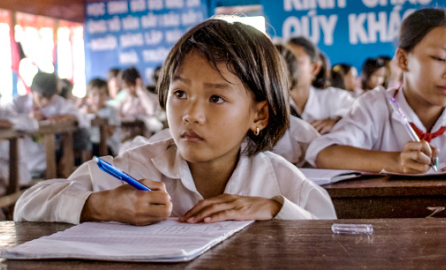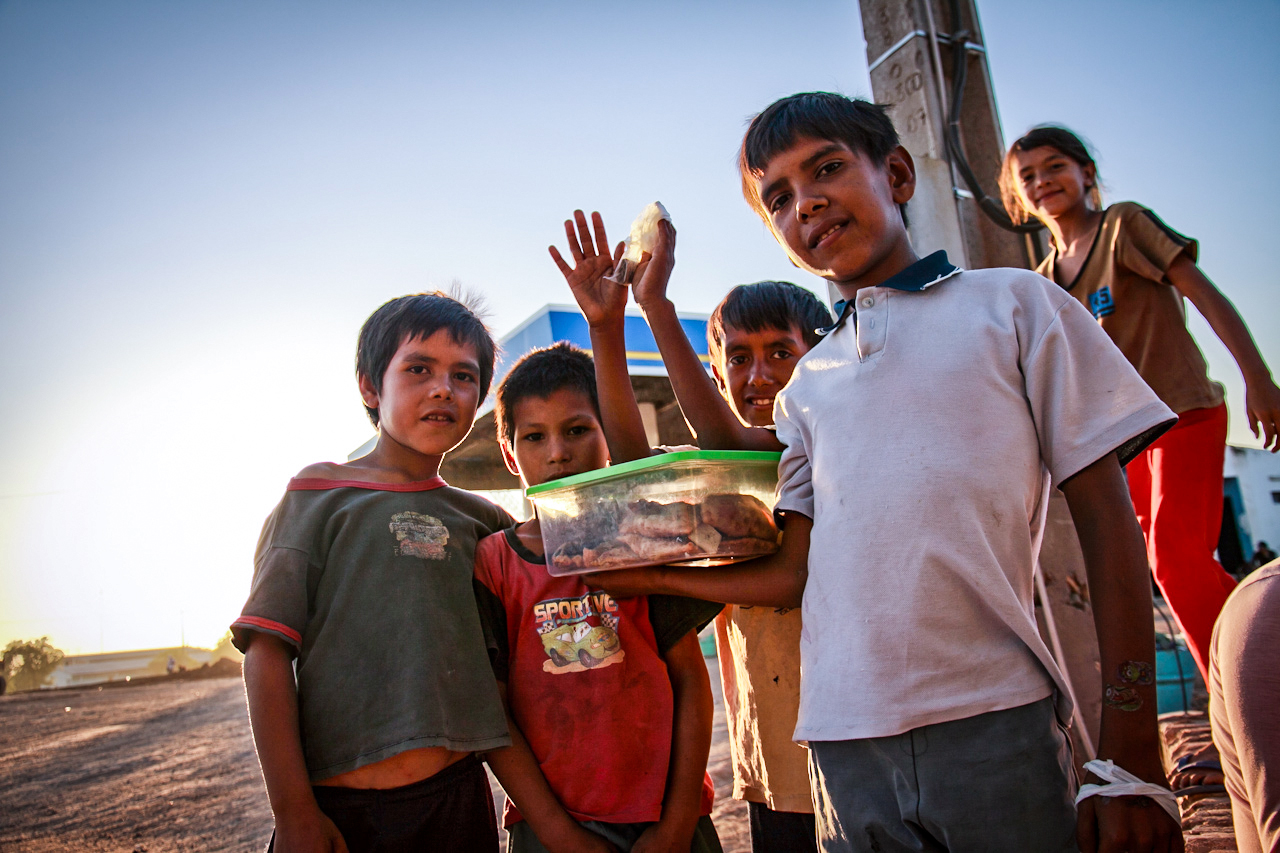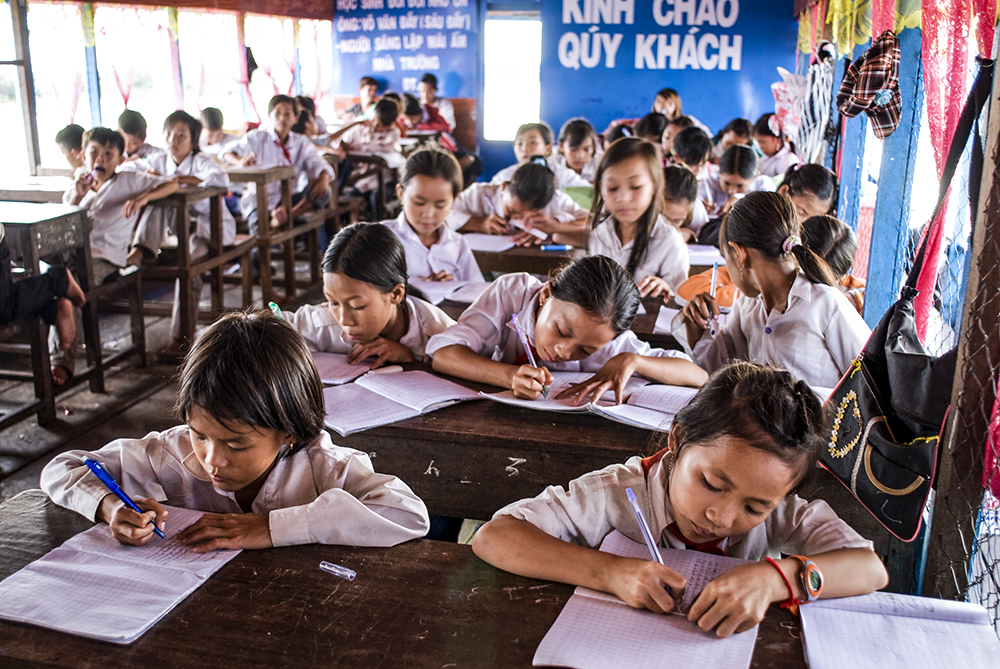Access to quality education is vital for sustainable and equitable development. It’s no wonder than that the emphasis on education – and the Sustainable Development Goal 4 – plays a major part in the EU development cooperation.
What strategies have EU Delegations employed in helping partner countries address the major challenges? We spoke to three of them to find out.
▼ Paraguay: Strengthening the quality of teaching
Even if school enrolment has improved in many countries, at least at primary level, poor quality of teaching can mean many children leave without acquiring basic literacy and numeracy skills.
After the fall of the dictatorship in the 1990s, some one million additional children entered the Paraguyan school system for the very first time. Photo © Arcadiuš/Flickr
In Paraguay, after the end of the dictatorship in the early 1990s, some one million additional children entered the school system for the very first time. As a result, the government had to recruit hundreds of new teachers – but many of them were poorly qualified.
|
Policy development in Paraguay In Paraguay, the EU – the country’s biggest donor – is providing €46 million to help develop the government’s education policy, using an integrated approach to change the governance structure. “The idea is that if the education is to improve, it’s not just the Ministry of Education on its own that has to deal with it,” said Conefrey. “We also have regular conversations with the ministries of finance and planning, and we’re very much promoting the deconcentration to involve territories and bring the education service much closer to the end beneficiary.” This emphasis on deep concentration at the territorial level, Conefrey added, “helps ensure that all the needs are captured and that reforms are implemented in the best possible way”. |
The EU Delegation, based in Asuncion, has assisted the government in addressing this skill gap, by supporting a pilot project in the Caazapá Department, in the south of the country.
The project introduced innovative teaching methodologies to help improve and identify the responses to the teachers’ capacity development challenge. This project came on top of the regular EU budget support assistance to the education sector in the country. (for more on EU support, see "Policy development in Paraguay")
Helen Conefrey also spoke to us about the need for long-term vision and evidence-based policy making. Watch the following video and post your comments below:
“The project was really a quick-fix solution,” said Helen Conefrey, International Aid and Cooperation Officer at the EU Delegation. “The focus was mainly on literacy, basic mathematics, and science. It was very much a scripted lesson approach.”
Although the project did not address the underlying issues, in the country overall, Conefrey added, “there really is a feeling that this is what’s needed at least in the immediate and short-term, in order to provide stronger support to teachers and hopefully achieve better learning results and much more participation from students themselves.”
▼ Cambodia: Aligning with government policies
Whenever governments have sound sector policies in place, development partners should strive to align their programming with existing national objectives.
Cambodia is struggling with a lack of institutional and staff capacity in the education sector, but has put policies in place to address that. Photo © Charles Chan/Flickr
In Cambodia, the government has introduced a Teacher Policy Action Plan to overhaul teaching and is also pushing for greater school-based management and a systems approach to reforms and targets.
“The plan is very ambitious,” said Noeun Bou, Project Manager at the EU Delegation in Phnom Penh. “It addresses the quality of teaching and qualifications, in particular.”
Cambodia is struggling with a lack of institutional and staff capacity in the education sector, and the Action Plan is part of a strategy to address that, said Bou.
Though most of the EU’s €140 million assistance to the country comes in the form of budget support to the government and contributes to the general strengthening of the education system, the EU Delegation is also providing funding to the Capacity Development Partnership Fund (CPDF), managed by UNICEF.
|
Lessons learned from CPDF A recent outcome evaluation by Unicef has found that CPDF has achieved capacity development improvements, particularly at the national level. Staffing and budget constraints were listed among key challenges for less noticeable impact on the sub-national, district level. The evaluation also saw improvement in coordination in the education sector, which it said contributed to increased effectiveness of education capacity development interventions. Among key recommendations, the evaluation called for developing and integrating more gender-responsive planning and targets. Source: Unicef (PDF) |
“The fund is not a traditional technical assistance that you might see in combination with budget support,” said Michele Crimella, International Aid and Cooperation Officer at the EU Delegation. “It’s actually a structure that’s been specifically developed to support the Ministry in the implementation of its Capacity Development Master Plan.”
Noeun Bou and Michele Crimella on how to ensure effective response to educational challenges in Cambodia:
The fund and the associated Capacity Development Master Plan (CDMP), Crimella said, represent a joint effort by development partners in Cambodia and the Ministry of Education in structuring and planning capacity development around the gaps arising from the implementation of reforms.
“Now, the government can use this fund to support the implementation of its reforms,” said Crimella. “It was an attempt for us to really work with the government and the Ministry of Education in implementing the vast number of reforms they have initiated – while boosting capacity for their sustainment.”
The CPDF is an interesting example of the extreme level of alignment possible when the government has good policies in place, said Crimella. “With budget support, we provide funds to the treasury, but the CPDF allows us to support the Ministry of Education directly in the implementation of its own plan.”
▼ Malawi: Improving access in resource-poor environments
Malawi, in Southeastern Africa, has the third-highest population growth rate in the world. Accommodating the increasing number of young people who aspire to go to school is among the biggest challenges facing the country’s education sector.
Malawi has the third-highest population growth rate in the world; it's also one of the poorest countries in Africa. Photo © Lars Plougmann/Flickr
The EU’s involvement in the education sector is relatively new, so the results, for now, are modest. In supporting the government's education development strategies, the EU focuses on strengthening secondary education and Technical and Vocational Education and Training (TVET).
“We felt that there is a gap in these two areas,” said Judith Chirwa, Project Manager at the EU Delegation. “We’re losing a lot of young people who have graduated from primary education, but are unable to access secondary schools, simply because there aren’t enough places for them.”
Malawi is one of the poorest countries in the world, so for the EU Delegation the priority was to find ways of boosting growth and job opportunities, said Chirwa.
|
Educational challenges in Malawi A number of challenges affect the education sector in Malawi, including the high average teacher-pupil ratio, which stood at 1:67 in 2014, high dropout rates and critically low learning outcomes. In addition, many children don’t attend school at all and girls are at risk of being denied education because of family and household responsibilities, early marriage and pregnancy. Malawi’s rapidly increasing population is also putting pressure on the government to scale up education. More than half of the country's 16.7 population – 8.5 million – is under 18-years old. Source: Unicef |
“Through TVET,” she explained, “we can capture the young people who are out of school. This allows us to create employment opportunities, both formal and informal, and is helpful for the overall growth of the country.”
As part of this approach, the EU Delegation is supporting 28 learning centres – TVET colleges and community school development centres – across Malawi. This mainly comes in the form of new high-tech equipment, which Chirwa said, will significantly improve the quality of training.
Judith Chirwa on grasping opportunities in challenging contexts:
In the secondary education programme, meanwhile, the EU Delegation is supporting the government in the expansion of community schools throughout the country, with the aim of creating 4,200 additional spaces for students.
The EU Delegation and the government are also discussing ways of maximising the infrastructure investments. “This includes, for example, double-shifting of schools, where we can have two sets of learners coming in,” said Chirwa. “This way, we can take on more learners, so that’s obviously very positive.”
Another form of EU support involves the roll out of a new curriculum for secondary education. “This one is learner-centred and focuses more on science and mathematics, which I think is the direction that we should be going if we aim to compete on the global market and become a bit more industrialised.”
The EU Delegation funded a nationwide teacher orientation and provided basic materials, including syllabi, to the schools.
Despite the country’s limited resources, the government is recognising the vast educational needs, said Chirwa. As a result, the EU Delegation has been able to grasp whatever opportunities may come.
“Now, we’re in the process of procuring teachers and learning materials, which will definitely have a huge impact on the schools,” Chirwa added. “We’re talking of textbooks, computers, furniture – if only to improve the learning environment itself. So, I think we’re moving in the right direction.”
✎
This article is part of a thematic series on education and development. Access more articles and videos here.
This article was written by Bartosz Brzezinski. Photo © Charles Chan/Flickr









Log in with your EU Login account to post or comment on the platform.